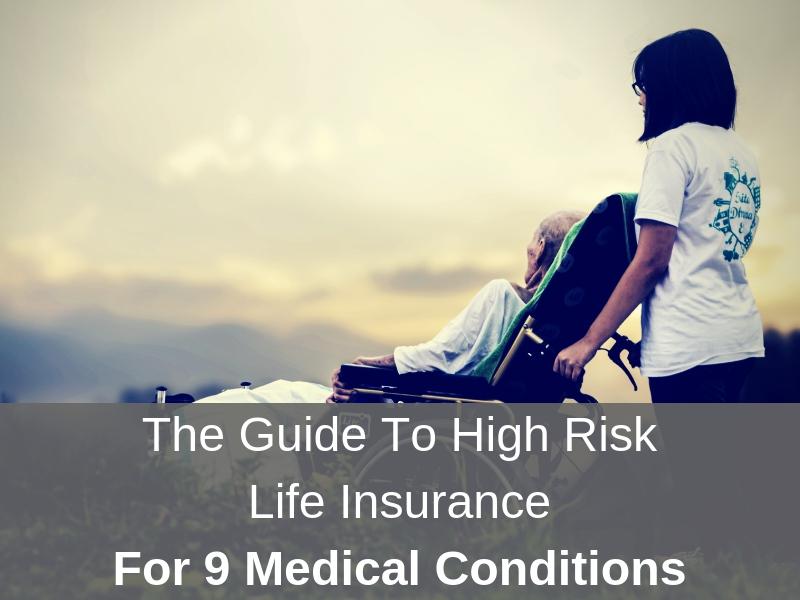In the intricate tapestry of life, few threads are as crucial as the safety nets we weave for ourselves and our loved ones. Life insurance, often seen as a cornerstone of financial planning, promises peace of mind amid the uncertainties of tomorrow. Yet, for high-risk individuals, this promise can feel more like a puzzle with missing pieces. Are life insurance premiums fair for those whose lives are painted with bolder, more unpredictable strokes? As we delve into this intriguing question, we unravel the layers of risk assessment, fairness, and the very essence of what it means to secure a future. With a confident stride, let’s explore the balance between actuarial tables and human experience, and discover whether the scales tip justly for those who walk a path less predictable.
Understanding Risk Factors and Premium Calculations
In the intricate world of life insurance, the assessment of risk factors is a pivotal element in determining premium costs. Insurance companies evaluate various risk factors such as age, health status, lifestyle choices, and occupation to ascertain the likelihood of a claim being made. For individuals deemed high risk, these assessments can sometimes feel like a double-edged sword. While they are essential for the insurer to maintain a sustainable business model, they can also result in higher premiums for those who may need coverage the most.
- Age: Younger individuals generally pose a lower risk compared to older applicants.
- Health Conditions: Chronic illnesses or a history of medical issues can increase perceived risk.
- Lifestyle Choices: Smoking, excessive alcohol consumption, and risky hobbies can elevate risk levels.
- Occupation: Jobs with higher physical danger often result in higher premiums.
For high-risk individuals, understanding these factors can help in seeking out policies that offer a fair balance between coverage and cost. Insurers are increasingly using technology and data analysis to refine their risk assessment processes, potentially leading to more tailored and equitable premium calculations. By gaining a deeper insight into these dynamics, high-risk individuals can better navigate the complexities of the insurance landscape.

Unveiling the Disparity: High-Risk vs. Standard Premiums
When examining life insurance premiums, a stark contrast emerges between those deemed high-risk and their standard counterparts. High-risk individuals often find themselves facing significantly higher premiums due to factors such as pre-existing health conditions, hazardous occupations, or risky lifestyle choices. This discrepancy raises important questions about fairness and accessibility. Why should someone with a more adventurous lifestyle or an inherited health condition be penalized so heavily?
- Health Concerns: Those with chronic illnesses or a history of serious medical conditions often see premiums skyrocket.
- Occupation Hazards: Jobs with increased risk, like firefighting or construction, can lead to higher rates.
- Lifestyle Choices: Engaging in extreme sports or smoking can dramatically affect one’s premium.
These factors create a disparity that seems to penalize individuals for circumstances often beyond their control. While insurance companies argue that the increased premiums reflect the higher likelihood of payout, the ethical implications of such a pricing model warrant further discussion. By understanding these differences, we can better advocate for more equitable solutions in the insurance industry.

Strategies for High-Risk Individuals to Secure Fair Rates
Navigating the landscape of life insurance can be daunting, especially for those deemed high-risk. However, there are several strategies that can help secure more equitable premiums. First and foremost, consider working with an independent insurance agent. These professionals have access to a variety of insurance companies and can help find the most suitable options tailored to your unique needs. It’s essential to shop around and compare policies from multiple providers, as each company evaluates risk differently and may offer more competitive rates.
Another effective approach is to improve your health profile. If your risk factors are related to lifestyle choices, such as smoking or obesity, taking steps to address these can lead to lower premiums. Additionally, providing comprehensive and accurate information during the application process can prevent surprises and ensure you are quoted accurately. Don’t shy away from requesting a policy review after significant health improvements, as insurers may be willing to adjust your premiums in light of a healthier lifestyle. Lastly, consider opting for a policy with a shorter term or lower coverage amount initially, with the option to upgrade as your risk profile improves.

Expert Recommendations for Navigating Life Insurance Challenges
When it comes to acquiring life insurance as a high-risk individual, understanding expert recommendations can be pivotal. It’s crucial to first evaluate your health and lifestyle factors that may contribute to higher premiums. High-risk categories often include those with chronic health conditions, hazardous occupations, or risky hobbies. By understanding your specific risk factors, you can more effectively negotiate with insurers or seek specialized policies tailored to your needs.
- Compare Multiple Insurers: Not all insurance companies assess risk in the same way. Shopping around can uncover more favorable rates.
- Consider a Medical Exam: While it might seem daunting, a medical exam can sometimes lead to lower premiums if your health is better than expected.
- Look for No-Exam Policies: For those with known health issues, some insurers offer policies without a medical exam, though at a higher cost.
- Seek Professional Advice: Consulting with an insurance broker or financial advisor who specializes in high-risk cases can provide insights and options you might not discover on your own.
By leveraging these strategies, high-risk individuals can navigate the complexities of life insurance with greater confidence and potentially find more equitable premium rates.

